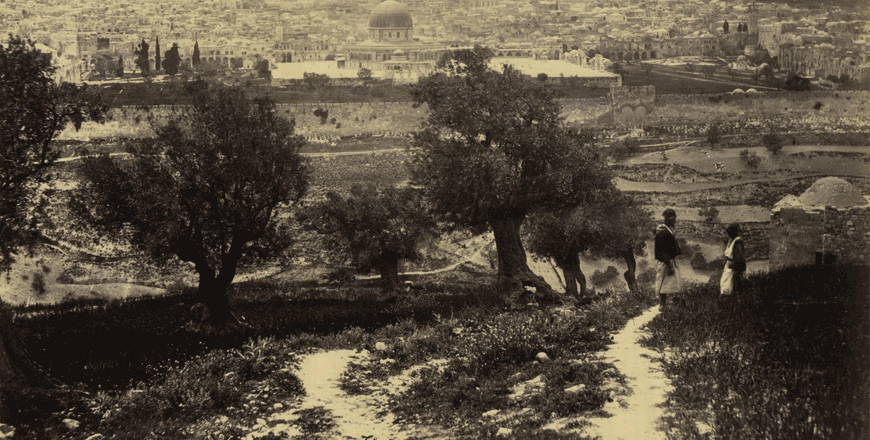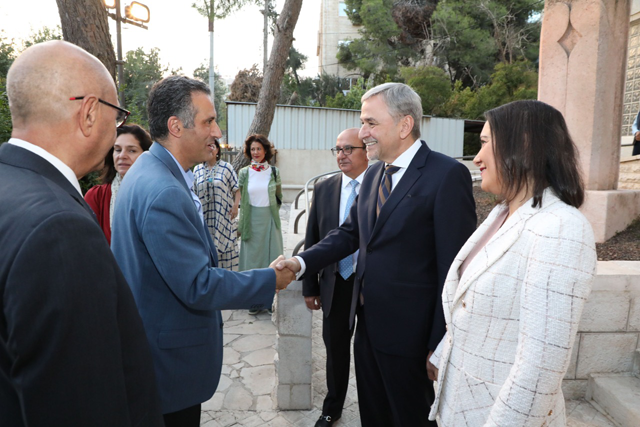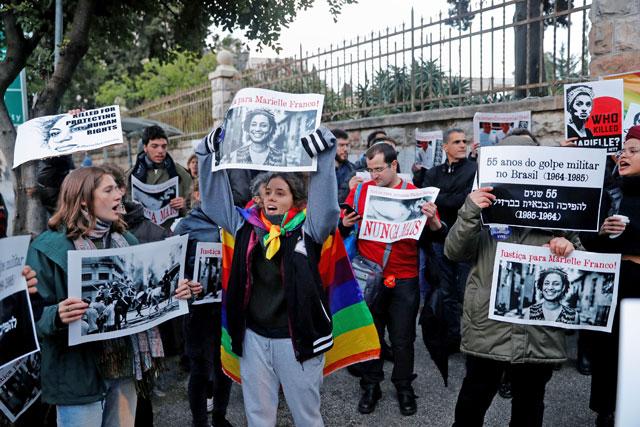You are here
Exhibition celebrates Brazilian emperor’s visit to the holy land
By Saeb Rawashdeh - Nov 28,2022 - Last updated at Nov 28,2022

AMMAN — Celebrating the bicentenary of the establishment of Brazil, the Royal Institute for Interfaith Studies in Amman, the Jordan Gallery of Fine Arts and the Brazilian embassy in Amman organised a talk on Sunday about a visit of Pedro II to the Holy Land in 1876.
“Pedro II [1825-1891] nurtured love and passion for the Holy Land and he visited the region in 1871 and 1876,” noted Professor Roberto Khatlab, a Brazilian scholar who studies philosophy, Oriental theology and relations between Brazil and the Arab world.
The Brazilian ruler travelled to Egypt, Syria, Lebanon and Palestine, meeting both Christian and Muslim communities, Khatlab said during a lecture that was part of the exhibition, titled “The Trip of Emperor Pedro II of Brazil to the Holy Land in 1876: A collection of Nineteenth Century Photos”. The exhibition, which started on November 2 will run until December 1.
More than 800 photos were collected during his trip, showing iconic landscapes of the Levant, its religious sites and everyday life. The present exhibition contains 45 photos, chosen by the Brazilian embassy in Amman and the Jordan Gallery of Fine Arts, organisers said.
Pedro II was a catalyst behind a great Arab migration to Brazil and Latin America, said Khatlab, whose own family migrated from Lebanon to Brazil.
Many kings and emperors visited the Levant during the reigns of the Ottoman sultans Abdulaziz [1861-1876], Abdul Hamid II [1876-1909] and Mehmed V [1909-1918], said Mohammad Ghosheh, a historian and director of El Hassan Bin Talal Centre for Jerusalem Studies. Ghosheh added that the rulers would often visit holy shrines and sites in Jerusalem and Palestine.
“Pedro II started his tour from Beirut, went to Damascus and continued to Nazareth and Jerusalem,” said Ghosheh, noting that he also spent a few days near Lake Tiberias.
The Brazilian king was very interested in ancient texts and the sites that he encountered in Palestine, said Khatlab. Pedro II also wrote a diary during his trip that now belongs to the Imperial Museum in Petropolis, Brazil, he added.
Now, around 7 per cent of the Brazilian population is of Levantine ancestry. “The Arab Levantine influence on Brazil is so strong and so incorporated that one cannot understand the Brazilian culture, identity, without considering the intense presence of Arab elements in Brazilian DNA,” said Ambassador of Brazil to Jordan Ruy Amaral.
Related Articles
AMMAN — Deputising for HRH Prince Hassan, Chairman of the Board of Trustees of the Royal Institute for Inter-Faith Studies (RIIFS), Minister
AMMAN — Public Sector Development Minister Yasera Ghosheh and Civil Service Bureau (CSB) President Khalaf Hmeisat on Tuesday discussed plans
OCCUPIED JERUSALEM — Brazil opened a new trade mission to Israel in Jerusalem on Sunday, edging back from earlier signals it would follow th

















